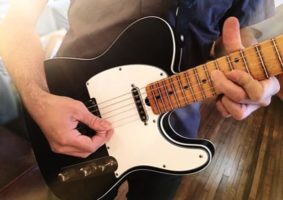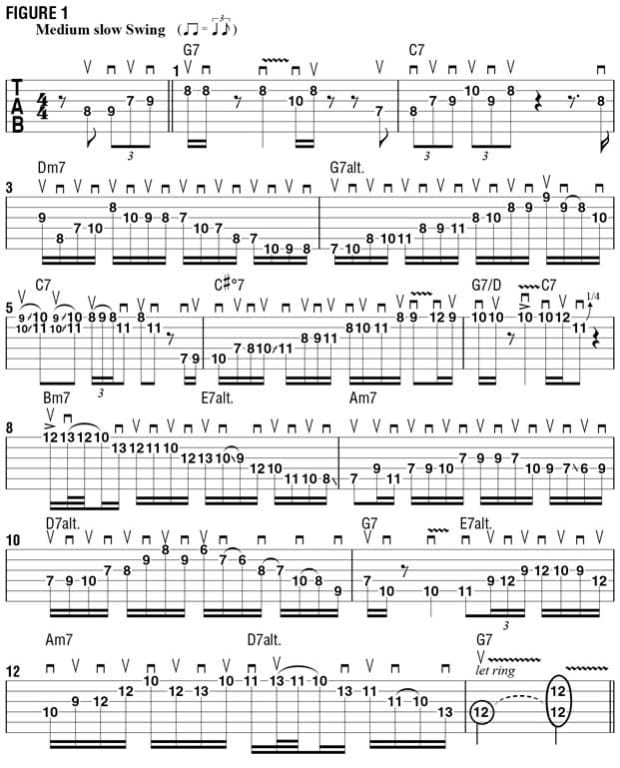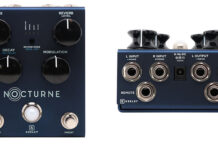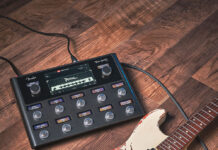
Double-Time Soloing Over a Laid-Back Groove
Continuing our exploration of jazz-blues, in this lesson, I present an example of how to craft a solo over a swing-eighths feel played at a moderately slow, laid-back tempo and tastefully shift into a higher rhythmic gear, using what jazz musicians refer to as a “double-time groove,” meaning predominantly 16th-note rhythms, as if you were playing eighth notes at twice the tempo.
The solo (see FIGURE 1) is played over a 12-bar jazz-blues progression in the key of G, using some of the common chord-change variations that we’ve been studying over the past six lessons, and features an interesting variety of rhythmic phrasing schemes, as well as melodic-harmonic devices, such as combining scales and arpeggios.
Let’s look at the rhythms first. I begin with a pickup phrase leading into bar 1, using an eighth-note triplet, which naturally flows with the underlying swing feel, but on the downbeat of bar 1 I abruptly switch to playing pairs of 16th notes followed by rests, which subtly introduce a double-time feel with a punctuated, march-like rhythm.
In bar 2, I momentarily shift back to eighth-note triplets over the four chord, C7, before launching into a long stream of unbroken 16ths in bars 3 and 4.
Bar 5 offers a brief respite from the 16th notes while accentuating the underlying swing-eighths feel with some bluesy double-stops and a bebop-style 16th-note triplet ornament. The double-time feel really gets going in bar 6, as I begin a long, dense parade of mostly alternate-picked 16th notes that continues, with a few brief interruptions, all the way to the end of bar 12. Notice how natural and welcome the musical “breath” taken in bar 11 sounds, after hearing so many notes played in succession.
Melodically and harmonically, double-time phrasing presents an interesting challenge: what notes to play to fill up all that space in a meaningful way that relates to and describes the underlying progression. One effective approach, which I think I demonstrate pretty well here, is to target a specific chord tone, such as the root, third, fifth, seventh or ninth, on the downbeat of each change and use related scales, arpeggios and chromatic passing tones as “fill” between these musical cornerstones.
Bar 3 outlines a Dm11 arpeggio (D F A C E G) with some descending chromatic notes added, and bar 4 is primarily a run up the G diminished whole-stone scale, also known as the G super-Locrian mode (G Ab Bb B Db Eb F). Over the C#dim7 chord in bar 6, I ascend the C half-whole diminished scale (C Db Eb E F# G A Bb). Bar 8 is built mostly around the modes B Locrian (B C D E F G A) and E super-Locrian (E F G G# Bb C D), with the F note on beat one briefly clashing with the Bm7 chord’s Fs (B D F# A). In bar 8, I “tonicize” the temporary Am tonal center by outlining an Am arpeggio (A C E) and adding other notes from the A harmonic minor scale (A B C D E F G#).
Bar 10 features two different approaches to emphasizing the D7 altered-dominant sound. On beat two, I play an ascending Ab arpeggio (Ab C Eb) to efficiently paint a tense D7b5b9 sound over the D bass note then play a descending line based on D super-Locrian (D Eb F F# Ab Bb C), which additionally touches upon the equally tense sharp five, A#.

Source: www.guitarworld.com










